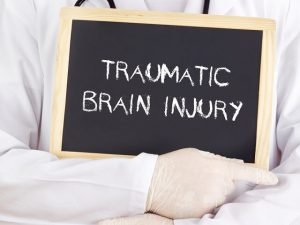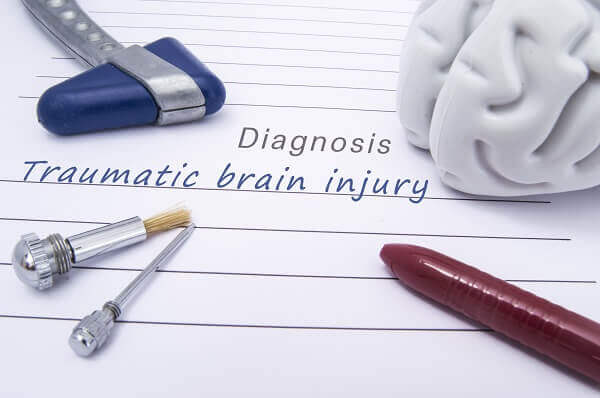Healthcare providers use a variety of tools to diagnose traumatic brain injury (TBI), including interviews with the patient and his family, the Glasgow Coma Scale (GCS), language tests, neuropsychological tests, and imaging tests such as CT scans and MRIs. A misdiagnosis can result in a sizable malpractice claim.
Although several different diagnostic tools are listed below, overreliance on any one of them could result in malpractice, depending on the circumstances of the patient and the facts of each individual case. Medical brain imaging scans, for example, are considered inadequate tools to detect or rule out the presence of TBI on their own.
The Acute Concussion Evaluation (ACE)
Most of the time, the diagnostic process consists of an initial assessment known as the Acute Concussion Evaluation (ACE). The ACE evaluation consists of gathering information from the patient, if possible, or from the patient’s family or associates otherwise. This assessment involves:
- Gathering critical information about the injury – how it occurred, for example, and any symptom that appeared immediately afterward.
- Finding out whether the patient lost consciousness. Although the loss of consciousness renders TBI a more likely diagnosis than it otherwise would be, it is definitely possible to suffer TBI without any loss of consciousness.
- Finding out whether initial symptoms worsened over time and whether any new symptoms appeared if the ACE evaluation did not take place immediately after the injury. In many cases, patients do not seek treatment until symptoms begin to appear or until symptoms worsen. This kind of delay is a bad idea for both medical and legal reasons.
- Finding out which activities the patient participated in, putting him at greater risk of TBI – playing rugby, for example.
The Glasgow Coma Scale (GCS)
The Glasgow Coma Scale measures the severity of a traumatic brain injury. It evaluates the following three abilities:
- Speaking ability: Is the patient able to speak at all? Does what he says make sense?
- Ability to open the eyes: Can the patient open his eyes at all? If he can, does he do so only when asked to do so?
- Ability to move: Is the patient able to move his body at all? If so, how much can he move? What type of stimulation is required? Will simply asking the patient to move t\ produce the desired response? On the other end of the spectrum, does the patient require painful stimulation to be able to move?
A health care provider will use a standardized scoring system to evaluate the patient’s responses with respect to all three of the foregoing abilities and assign the patient a rating:
- A rating of 13 or more indicates mild TBI or no TBI at all;
- A rating of 9, 10, 11, or 12 indicates moderate TBI; and
- A rating of 8 or lower indicates severe TBI.
Keep in mind that the severity of the TBI doesn’t necessarily bear a direct relationship to the time that will be required for recovery.
Speech and Language Tests
A speech-language pathologist may be called in to conduct one or more speech and/or language tests on the patient. These tests may evaluate one or more of the four language skills: speaking, listening, reading, and writing. They are likely to be more extensive than the minimum required for the GCS evaluation described above.
The tests will evaluate the strength and coordination of the muscles that are used in speaking and swallowing. A speech pathologist might also evaluate the patient’s command of grammar and vocabulary as well as reading comprehension, social communication, and other learned skills.
Cognition and Neuropsychological Tests
People with severe TBI have often suffered temporary or permanent brain damage that can be discovered by administering cognition and neuropsychological tests.
- Cognition tests evaluate the patient’s ability to think, reason, solve problems, process information, and remember. Most victims of severe TBI suffer from some form of cognitive deficit.
- Neuropsychological assessments utilize task-based evaluations to measure higher cognitive functions and basic sensory-motor processes. A patient’s judgment, language skills, and eye-hand coordination might be evaluated through task performance, for example.
The doctor must familiarize himself with the patient’s case history and interview his family in order to understand the patient’s abilities as they existed before the injury occurred. This is necessary so that the doctor can compare the patient’s current capabilities with his former capabilities, so that the extent of necessary rehabilitation can be evaluated.
Imaging Tests
Many medical devices exist that can provide images of a TBI patient’s brain. While these imaging devices are not enough by themselves to properly diagnose TBI, they can be helpful.
-
- Computerized Tomography (CT). A CT (“cat”) scan takes X-rays from various angles and puts them together to provide a complete picture of the brain in three dimensions. CT scans can reveal brain bleeding, tissue damage, and certain other obvious forms of brain damage.
- Magnetic Resonance Imaging (MRI) scan. An MRI machine uses magnets and radio waves. The result is a composite of brain images that is more detailed than that which is produced by a CT scan. MRIs are not generally used in initial TBI evaluations because they take time to complete. They may be used later, however.
- FLAIR scans: A FLAIR scan is actually a special form of MRI scan that can discover smaller areas of brain damage than a conventional MRI cannot detect.
- Intracranial pressure (ICP) monitoring. TBI can cause dangerous and sometimes fatal swelling of the brain, especially if the victim suffers a second impact before the damage done by a first impact has completely healed (as might occur when a coach sends a player back out onto the field after an injury, for example). Unfortunately, swelling, although caused by brain injury, also causes further brain injury as the brain presses against the inside of the skull. In such cases, it may be necessary to insert a probe into the skull to keep track of the swelling and to prepare a treatment.
- Comparing baseline images in athletes. Many athletic organizations will conduct a “baseline” CT or MRI scan of the brains of their athletes. If the athlete is injured in the future, a second scan can be conducted and then compared with the baseline scan to detect changes that might otherwise have gone unnoticed.
Misdiagnosis
When it comes to misdiagnosis of a traumatic brain injury, the stakes are high. Failure to properly diagnose TBI can result in:
- Allowing an athlete to return to play too soon.
- Failure to diagnose a more serious head injury.
- Failure to properly treat the injury, resulting in complications or death.
- Second impact syndrome, in which an already-injured patient suffers a second head injury before the first head injury has fully healed. This condition is almost always fatal.
Depending on the circumstances, a healthcare provider’s failure to properly diagnose TBI could be considered malpractice. The question that must be answered is whether the healthcare provider met the standards that would have been observed by a “reasonable” healthcare provider of equivalent training and education (for doctors who are unqualified to treat TBI, failure to refer you to a specialist could be considered a form of malpractice).
When it comes to misdiagnosis or delayed diagnosis of TBI, the consequences of a medical error could be catastrophic – additional brain damage, for example, or permanent brain damage and even death. Even where the resulting brain damage is not permanent, the lengthening of the recovery period could result in months or even years of lost income as well as a degraded quality of life.
Why a TBI Might Be Misdiagnosed
Although some cases are obvious, it often takes a highly trained professional to properly diagnose TBI in time to minimize the damage to the patient. Misdiagnosis occurs for the following reasons, among others:
-
- A patient suffers other, more immediately life-threatening injuries, and the TBI is ignored, even if only for a while, in favor of treating these other injuries. Such a choice may or may not constitute malpractice.
- Obvious TBI symptoms are delayed until several days or even several weeks after the accident that caused the TBI. In many such cases, however, the fault lies with the patient for not seeking medical treatment immediately after an accident.
- The healthcare provider relied too much on medical imaging devices such as CT scans and MRIs. Without more, the medical community does not consider the images produced by these devices to be sufficient evidence of TBI.
- A thorough examination is not conducted, when such an examination would have revealed the TBI sooner. A TBI evaluation will likely include an interview with the patient (if possible) and an evaluation of his medical history.
- No “accident” per se occurred, in the sense of the patient’s head hitting an object, but the patient was violently jerked or shaken (especially if the patient is a small child). Imagine a serious motorcycle accident in which the rider was not wearing a helmet. It is not so much the rider’s skull hitting the asphalt that hurts him, so much as his brain hitting the inside of his skull. That is why no external impact is necessary for TBI to occur, although the typical case does involve an external impact.
Wrongful Death
If you are harmed by malpractice, you can file a personal injury claim against your healthcare provider. If you die from the injury, however, the executor of your estate can file a wrongful death lawsuit against your healthcare provider. Damages, which could add up to a substantial amount of money, go to the beneficiaries of your estate – typically the people you name in your will or, if you have no will, to certain close relatives.
Contact Berkowitz Hanna Today for a Free Initial Case Evaluation
Your first step in seeking compensation will be to schedule an initial case evaluation with us. We will listen to your story, discuss your case with you, and decide whether we think you have a viable claim. Remember this much: We will never charge you a dime for our services unless we win your claim.
Malpractice cases are not easy to win – but if you do win, you might be entitled to a lot more compensation than you think. Call Berkowitz Hanna today, or simply contact us online to get the process started.




